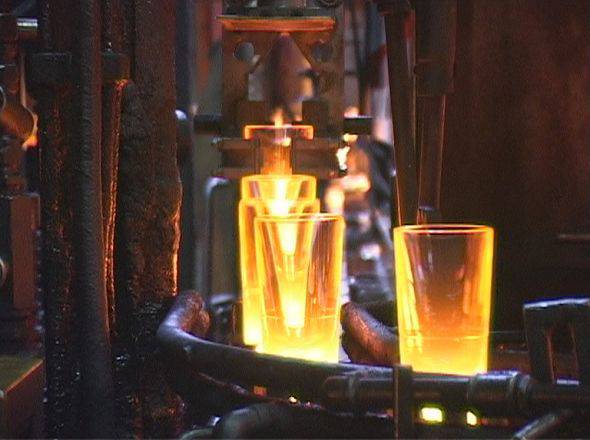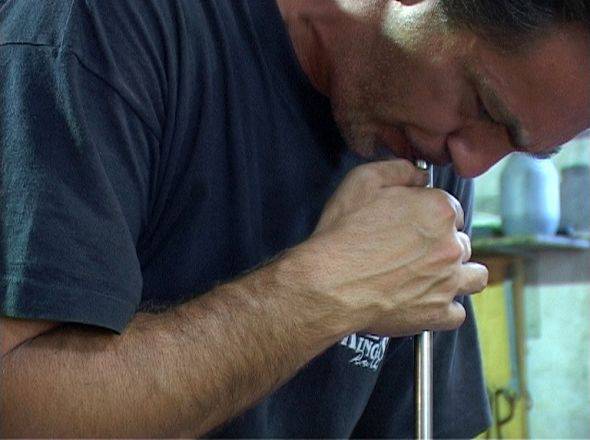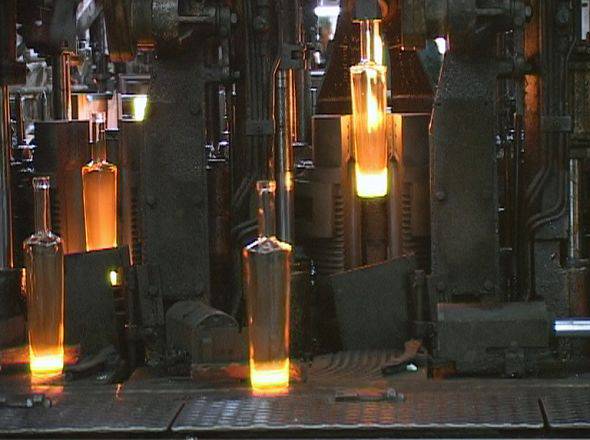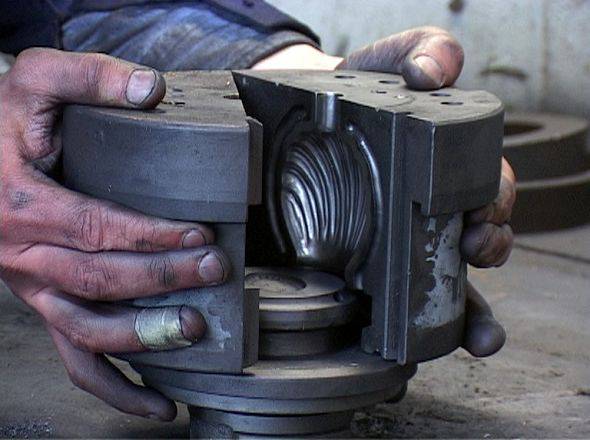Decoration methods are the same ones used for other glass objects: Silk-screening, sand-blasting, glazing with acids and painting (see Flat glass: Cold-decoration).
We must add that, given that we are talking about containers used for foodstuffs or pharmaceuticals (which are considered, by law, as packaging and destined, after use, to be recycled), the producer must consider laws in relation to safety and removal of toxic waste (use of acids, presence of heavy metals like mercury, cadmium, lead, which are usually in enamels for silk-screening ad painting); also, what the container will be used for and how it will be used must be known in order to carry out all the necessary controls and finish with a product which is suitable for the required use.
Here are some examples.
Silk-screening
After the drying of the decoration, the containers are heated at a temperature of about 600°C to allow the enamel to permanently adhere to the glass.
Knowing the final use of the container is also useful in assessing the level of annealing because, with certain processed, the molecular structure of the glass changes, with the consequent weakening of the container.
For example, in the case of bottles for pressure liquids (spumante, champagne), the maximum pressure at which the bottling occurs must be known.
Sand blasting
This is used only for particular production and it is important that the bottles, thus treated, are thoroughly washed before bottling.
What must be kept in mind is that this type of treatment produces micro-cracks on the surface which physically effect the structure of the container.
Acid glazing
This treatment is not recommended because, despite all precautions, the acids can get into the container with the consequent risk of residual acids being left inside even after washing them.
New technology
This is white coating, and looks very much like traditional glazing.
The bottle treated like this can be cold silk-screened (80°C).
With this treatment, the glass is not corroded so it is particularly recommended for decorating bottles which must guarantee resistance to inside pressure.
Painting
A new decoration method has been developed in which paints and water are used which contain colouring pigments. The aesthetic effect is very good, but the cost is still high. Bottles painted using this method can be silk-screened, using fluid ink which are annealed at a low temperature.




